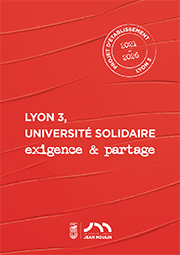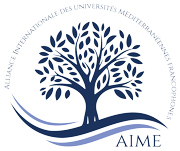AccueilRechercheProgrammes et productions scientifiquesThèsesThèses soutenuesThèses soutenues - 2006-2021Thèses soutenues - 2019
-
Partager cette page
- Recherche,
ALMUTERY Sultan
L’architecture vernaculaire de la ville de Djeddah face à la mondialisation : le cas du quartier d’Al Sharafeyah
Publié le 15 octobre 2019 – Mis à jour le 15 octobre 2019
Thèse en Géographie - Aménagement, soutenue le 11 octobre 2019.
Cette recherche porte un regard holistique sur la ville actuelle de Djeddah, notamment sur ses parties construites après la révolution industrielle — des pays du Golfe en général et l’Arabie Saoudite en particulier — pour comprendre le décalage entre la forme urbaine dominante et les besoins des habitants. Pour répondre à cette question, nous examinons les évolutions politiques, démographiques et technologiques qui ont produit cette forme spatiale dans l’optique d’identifier les sources de ce décalage et de scruter la nature du refus exprimé par les habitants et les penseurs locaux de la ville. Un des résultats importants de cette analyse est l’identification de la fracture entre l’habitat et le quartier. Dans les quartiers planifiés, on constate un refus des habitants manifesté par des dysfonctionnements et une inadaptation aux pratiques coutumières des habitants. En ce qui concerne les quartiers non planifiés, si leur existence a contribué aussi à la résolution du problème de logements pour la partie de la population la plus fragile, on constate une dégradation importante des habitations. Mais dans ces deux tissus urbains différents, il existe des avantages et des inconvénients qui sont analysés dans ce travail de recherche.
This research presents a holistic view of the current city of Jeddah, in its parts built after the Industrial Revolution – Gulf countries in general and Saudi Arabia in particular – to understand the gap between the dominant urban form and the needs of the inhabitants. To answer this question, we examine the political, demographic and technological developments that have produced this spatial form in order to detect the sources of this gap and to examine the nature of the rejection expressed by the inhabitants and local thinkers of the city. One of the important results of this analysis is the identification of the gap between the residence and the neighbourhood. In the planned neighbourhoods, there is a refusal manifested by dysfunctions and a maladjustment to the customary practices of the inhabitants. In the case of unplanned neighbourhoods, while their existence has also contributed to solving the housing problem for the most vulnerable part of the population, there is a significant deterioration of housing. But in these two different urban fabrics, there are advantages and disadvantages that are analysed in this research work.
Mots-clés : Ville Moyen-Orient, ville en voie de développement, patrimonialisation, architecture vernaculaire, urbanisme, quartiers planifiés, quartiers non planifiés, quartier historique espace bâti, Arabie Saoudite, Djeddah.
Keywords : Middle eastern cities, and developing cities, heritage, vernacular architecture, urban studies, urban planning, planned districts, unplanned districts, historical district, built environment, Kingdom of Saudi Arabia, Jeddah.
Directeur(trice) de thèse : Bernard GAUTHIEZ
Membres du jury :
M. GAUTHIEZ Bernard, Directeur de thèse, Professeur des universités, Université Jean Moulin Lyon 3,
Madame LOUISET Odette, Professeure des universités, Université Rouen Normandie,
Monsieur BURGEL Guy, Professeur émérite, Université Paris Nanterre,
M. KHAN ALHASHIMI Ahmed, Assistant professeur, Université du roi Abdulaziz Djeddah
Mme HONEGGER Anne, Directrice de Recherche, CNRS, ENS de Lyon.
Président(e) du jury : Anne HONEGGER
Documentation
Mise à jour : 15 octobre 2019







